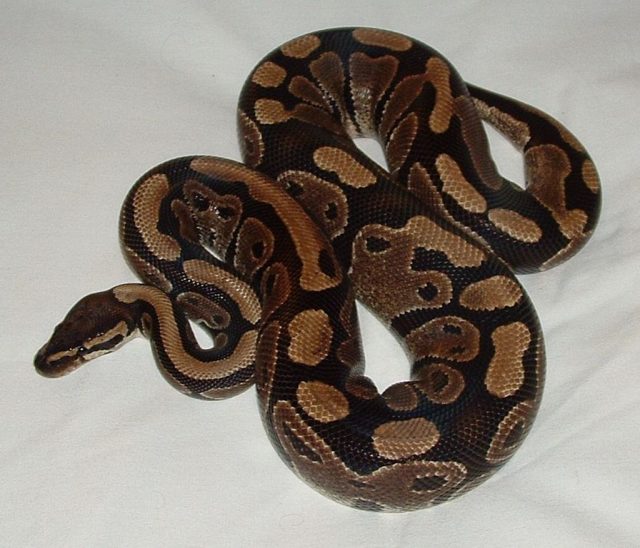Type the name of the breed you're looking for below
[wpdreams_ajaxsearchlite] Don't see the breed your're looking for? Click here and let us know!
Ball Python
| Place of Origin and Range | Ball pythons are a native species found in Africa. |
| Description | This is the smallest of the African pythons and is popular, largely due to its typically docile temperament. The name "ball python" refers to the animal's tendency to curl into a ball when stressed or frightened. They have a network of light-edged black markings on a tan to coppery-brown background. Usually with ovals within the black back stripe. |
| Morph Patterns Available | Yes |
| Adult Size | Can grow up to 5 feet(1.5m) some larger specimens have been documented. |
| Accommodation | Ball pythons prefer grasslands, savannah and sparsely wooded areas. Termite mounds and empty mammal burrows are important habitats for this species. A forested habitat would work best. Not as many branches for climbing as some snakes. These snakes prefer humid hides. Always include a day time basking heat source at 80'F(27'C) and a bathing dish big enough for your snake to climb in. |
| Lifespan | Can live 20+ years |
| Feeding / Diet | Depending on the size of your snake you may require mice, rats, chicken, or rabbit. Frozen feed can be found and is recommended due to health risks with using live food. |
| Breeding | Females are oviparous, with anywhere from 3 to 11 rather large, leathery eggs being laid. These are incubated by the female under the ground (via a shivering motion), and hatch after 55 to 60 days. Sexual maturity is reached at 11–18 months for males, and 20–36 months for females. Males will breed at 600 grams or more, but in captivity are often not bred until they are 800 grams , although in captivity some males have been known to begin breeding at 300-400 grams. Parental care of the eggs ends once they hatch, and the female leaves the offspring to fend for themselves. |
| Other Considerations | The standing record for oldest ball python was 50+ years at Philadelphia Zoo. Snakes are relatively hardy low maintenance animals when kept in the correct environment, and require little day to day care other than feeding and cleaning out the tank as required. However, like all animals, they can still become sick or injured despite our best intentions to prevent this. |



